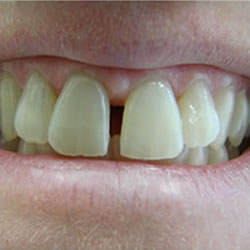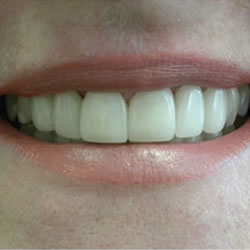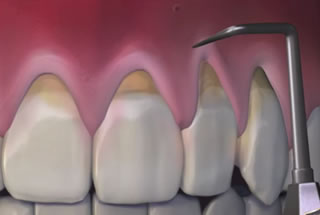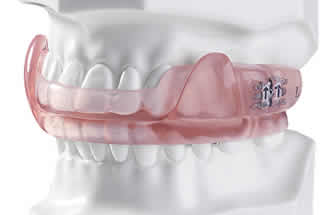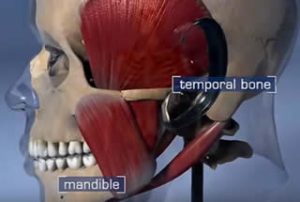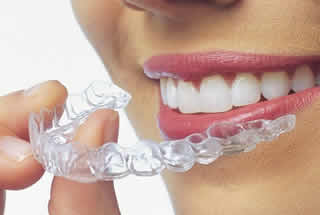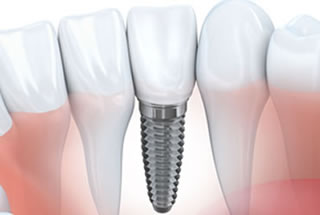
Your family, general, or pediatric dentist or orthodontist may refer you to an oral and maxillofacial surgeon for some dental treatments that require oral surgery. An oral surgeon is a specialist who has graduated from an accredited dental school and also completed additional education and residency related to surgical procedures needed to treat various oral diseases and conditions. An oral surgeon is trained in treating the following conditions:
- Removal of diseased or impacted teeth
- Placement of dental implants
- Treatment of facial trauma involving gums, jaws, nasal cavities, cheekbones, eye sockets, and forehead
- Evaluation of pathologic conditions such as cysts and tumors of the mouth and face or acute infections of the oral cavity, salivary glands, neck, and jaws
- Treatment of facial pain including those caused by temporomandibular (TMJ) problems
- Cosmetic or reconstructive surgery to correct jaw, facial bone, and facial soft tissue problems
- Corrective jaw surgery
- Cleft lip and cleft palate repair
- Surgical treatment for sleep apnea
There are many different techniques that oral surgeons use to accomplish your treatment goals. The choice of techniques may vary between surgeons and should be discussed between you and your surgeon prior to the procedure.
Many oral surgery procedures can be completed in an outpatient setting. Often you are only in the office for a few hours and can return to your regular routine in a matter of days. A good oral surgeon will be able to perform these procedures with little chance of complications, and will be able to provide you with the information you need to understand the recovery process. Your oral surgeon will often collaborate with other specialists, such as an orthodontist or cosmetic dentist, to achieve your ultimate treatment goals.
Take the first step towards a confident smile. Contact our Toronto dental office to schedule your consultation!
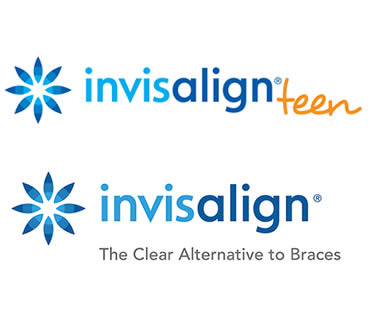
Modern technology is constantly making strides in improving dentistry, and the area of teeth straightening is no exception. In order to get your dream smile, you don’t have to be stuck with a mouth full of unsightly and uncomfortable metal braces any longer. Transforming your smile is now possible with a hidden product called Invisalign.
Also referred to as invisible braces, Invisalign utilizes clear plastic aligner trays to move your teeth into better positions. The series of customized trays are fitted for your mouth to gently move your teeth over time. Because they are created specifically for you, they are more comfortable than you might think and achieve their goal with minimal soreness. This is a great benefit over the painful and irritating process of traditional braces.
Wearing the clear aligners gradually shifts your teeth, and every few weeks your dental professional provides a new set of aligners to continue moving your teeth toward the final goal. This process is repeated until your teeth have moved into their desired positions, giving you a straight and attractive new smile. The aligners should be worn about 22 hours a day for best results.
Patients of all ages may be candidates for Invisalign. This technology is appealing to adults because it avoids the embarrassment of noticeable braces during professional and social encounters, and with teens who want to avoid the ridicule of a metal smile during an often emotional time of life. There is even a special version of Invisalign made for teens, which has a blue-dot display to remind the young adults about consistent wear and when it’s time to switch trays.
One of the other major benefits of Invisalign is that the trays are removable, making eating and hygiene easy. There are no diet restrictions like with traditional braces, and the cleaning hassles of metal brackets and wires does not exist.
If you are wanting to improve your smile with orthodontics, consider the revolutionary solution of Invisalign. It can keep you smiling throughout the entire process.
Are dental issues holding you back? Take control of your oral health by booking an appointment with our experienced team at our Toronto dental office.
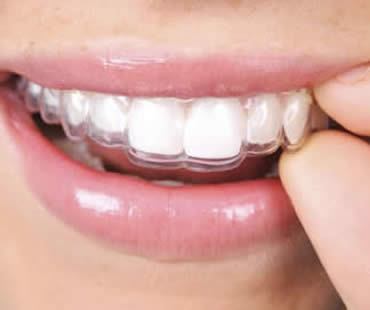
The innovative approach to improving smiles through Invisalign has paved the way for beautiful smiles for people of all ages. Not just for children and teenagers, Invisalign appeals to adults all the way through to retirement ages. It’s never too late to transform your smile and regain your self-esteem when you have the option of Invisalign.
What types of problems does Invisalign address? In addition to simply straightening the teeth to achieve a more perfect smile, dental problems like gaps, overcrowding, overbites, underbites, open bites and cross bites can all be improved.
The process involves wearing customized invisible plastic aligners over your teeth. New aligner trays are provided every few weeks during treatment as your teeth gently move to their improved positions. The aligners are removable for easy dental hygiene, since normal brushing and flossing are possible instead of dealing with cumbersome wires and brackets. The clear plastic trays are nearly invisible in your smile, hugging your teeth securely allowing for no embarrassing slips or speech impacts.
Invisalign is possible for just about anyone with permanent teeth and healthy gums. Older patients are often at higher risk for gum issues, so correcting crooked teeth or overlaps is especially beneficial to help those patients avoid gum problems related to gaps or inability to clean teeth properly. Correcting misalignments can also prevent jaw or joint pain in the mouth, head, and neck area.
Patients over the age of 50 are seeking orthodontic treatment more than ever. As they age, many people want to avoid dentures when possible and Invisalign can provide a great option for making smiles look more appealing while also improving oral health. A beautiful smile can also improve your outlook on life, making you look and feel younger. An attractive smile positively impacts your overall attitude and appearance, and it’s possible with the help of Invisalign.
Take the first step towards optimal oral hygiene. Reserve your dental appointment at our Toronto dental office now and experience personalized care.
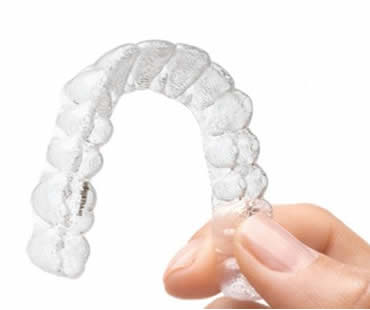
Not every smile is perfect, so many people want to improve their look through orthodontics. It’s not just a rite of passage for youth anymore; people of all ages pursue new smiles these days. A modern technology that is stylish and hassle-free has been developed called Invisalign. It provides great results without impacting your life as much as traditional braces.
The first step is choosing a dental professional who offers Invisalign treatment, since not every provider is trained and qualified in this approach. Once you find the right professional, the dentist will assess your mouth and determine if you’re a good candidate. With the exception of severe misalignment, most people can benefit from Invisalign.
To get started, your dentist will take teeth impressions and X-rays to create a 3D image of your mouth. That helps determine your treatment plan, how long you can expect the process to last, and allow you to see your teeth at each stage. Being able to see the final outcome is a great advantage of Invisalign.
Clear plastic aligners will be customized for your teeth. They are hardly noticeable in your smile and won’t cause irritation or discomfort. You’ll be instructed to wear them for 22 hours a day for a couple of weeks as they gently move your teeth into better positions, after which you’ll switch to a new set of aligners in the series. The trays are removed for cleaning and eating, making them much simpler than traditional braces. Your normal oral hygiene routine isn’t impacted, as you can continue brushing and flossing as usual without the appliance in your mouth. Many patients also rave about the fact that their diets do not need to change; there are no restrictions with Invisalign.
A checkup with your dentist is needed every 4-6 weeks to monitor your progress. It usually takes from 12-18 months to complete Invisalign treatment. With proper wear, you’ll end up with a beautiful smile without having to suffer through the common complaints of orthodontics.
Do not let another day go by without taking care of your dental needs. Request an appointment now at our Toronto dental office!
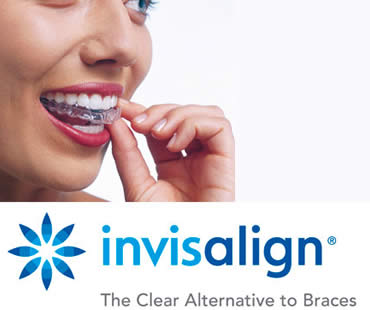
A new way to straighten teeth has been introduced with Invisalign clear braces. As you wear the invisible plastic aligners, your teeth are gently shifted into better positions and you avoid many of the hassles associated with traditional braces.
Treatment begins with a consultation with a professional who has been trained and recognized to provide Invisalign braces. A thorough analysis of your teeth and jaw, as well as your smile goals, will be done to determine if Invisalign is right for you. If so, a treatment plan will be customized just for you after X-rays and impressions of your mouth are taken. The process also uses 3D images to create a computer simulation of your treatment.
Using the exact measurements taken of your mouth, a set of aligners will be made from clear plastic. Invisalign treatment advances in stages, with a different set of aligners worn every two weeks. They should be worn consistently for about twenty hours daily, but are removable for eating and cleaning. Maintenance is simple because the aligners can be gently brushed along with your normal brushing routine.
There are no restrictions about foods to avoid when undergoing Invisalign treatment, since the aligners are removed while eating. You also don’t have to worry about food getting stuck in the braces like with metal braces, and because food doesn’t contact the aligners there are no worries about stains. Invisalign braces can be worn while playing instruments or sports, although they should not be considered a substitute for a protective mouth guard.
Visits to the orthodontist are usually required every six months or so to monitor treatment and ensure ideal results. The amount of time it takes to achieve your smile goals depends on each patient and how consistently the aligners are worn, but treatment often lasts about a year.
Take the first step towards optimal oral hygiene. Reserve your dental appointment at our Toronto dental office now and experience personalized care.

Let’s face it. When you talk about straightening teeth, images of middle school kids with mouths full of metal and colored bands come into your mind. As an adult, those images might give you nightmares if you imagine it for yourself. But what if you have crooked teeth or problematic bite issues? What are your teeth-straightening choices that won’t embarrass you? Invisalign is the answer and is often the right choice for adults seeking to straighten their teeth.
Invisalign is a system by which a series of clear plastic trays, or aligners, are worn for a minimum of 22 hours each day, gradually straightening your teeth without metal brackets or wires. As each tray completes its alignment, another tray is applied to continue your smile transformation.
The clear plastic aligners allow for discrete use for adults, especially in professional or interpersonal situations. It enables the wearer to function professionally without losing any kind of credibility because of negative perceptions of metal braces. You’ll eat with confidence on dates or at business dinners because the aligners are removed for eating meals. After rinsing your mouth with water, simply pop the aligner back in and allow your smile to straighten.
You’ll also take out the aligners each time you brush your teeth. This enables you to thoroughly clean your mouth and teeth and makes flossing a snap. Flossing with traditional braces takes a long time and can be difficult, even for adults. Choosing Invisalign as an adult allows you to have a healthier mouth and therefore fresher breath.
These and other benefits are possible with Invisalign. Visit your orthodontist to begin learning about all the advantages that Invisalign can offer you as an adult looking to have straighter teeth.
Take the first step towards a confident smile. Contact our Toronto dental office to schedule your consultation!







 E-Mail Us
E-Mail Us  416-595-5490
416-595-5490